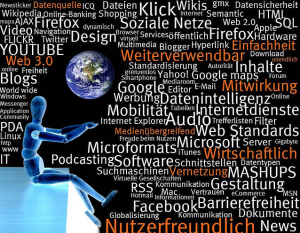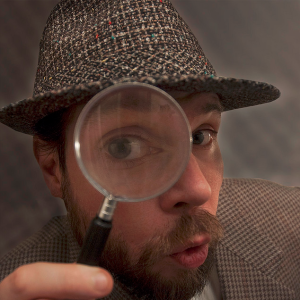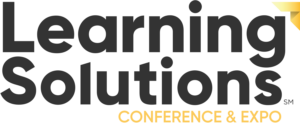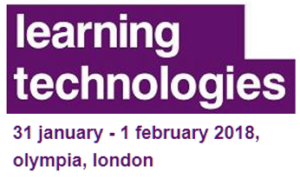As part of the celebration for the 10th DevLearn conference taking place in October, the eLearning Guild asked members of the Guild community to gaze into their crystal ball and predict what learning might look like 10 years from now, in the year 2024. You can get more details about #LRN2024 via the TWIST blog post: What Will Learning Look Like in 2024?
Ten years is in some contexts a long time, and in other just a blip on the radar. As I peer into the future, I see both of those contexts in play. Here are my thoughts.
Online will be the Default State
In a world where many of us are walking around with a computer in our pockets that is constantly connected to the internet, you could make the argument that “online” is already the default state. I don’t see it that way. In fact, I think today we’re just seeing the tip of the iceberg in terms of “online” being a default state.
First, what’s normal in the developed world in terms of devices and internet speeds is not a global standard. But in ten years we may actually see globally available mobile broadband access. That will fundamentally change the definition of learning for billions of people across the globe.
Second, today we don’t operate with an “always online” mindset. Even though our desktops and mobile phones are always online we more often than not operate with an offline mindset. Even the Load/Save document usage standard speaks to an outdated model when you have always on collaborative options like Google Documents. Hell, I still hear people use the phrase “online learning” as if we needed the qualifier.
We’re moving towards a culture where online is the default state. IN the very near future just about every device we own will have an internet connection and can both send and receive data. The implications for learning in a world where everything is online collecting data with computer processing power that can analyze that data in real time to provide individualized support are incredibly exciting. It may take a while, but I expect by the year 2024 we’ll see some of this potential being reached.
The Rise of the Curator
We are being constantly assaulted by information. It’s increasingly challenging for people to block out the noise to focus on what is important. This is especially applicable to learning. I already experience this today. There is so much great content available for me to take advantage of to develop my skills. It’s impossible to take it all in.
Luckily, I don’t have to.
There are a number of wonderful people in this industry that share what they are learning. As they come across a nugget of gold in the endless sea of information, they share it. These people are the curators I count on to keep my finger on the pulse of our industry.
The idea for using curation for learning has been gaining attention over the last few years. We’re starting to see more and more learning professionals looking to curation as a means to deliver solutions to their audiences. But that’s focused more on training than learning.
I see a future where curation reaches a tipping point from a consumption viewpoint. As more people become overwhelmed by the amount of information being thrown at them, they will instinctively be leaning on curators within their community to streamline their learning. It likely won’t even be a conscious shift; it will be a natural evolution of what learning is in relation to the changing environment in which it takes place.
A Shift to “Find Anything”
This one may get me in trouble, but I also see a redefining, or perhaps re-prioritization is the better word, of what learning is. We live in a world where most people associate “learning” with the idea of “knowing”. The person who has learned the most is usually thought of as the person that knows the most – the person that has all the answers. In our current learning paradigm, we still place a huge amount of value on the know-it-all.
The know-it-all’s value is increasingly dropping in an always-online world where the shelf-life of information is continuously shrinking.
What’s more important in today’s world isn’t knowing everything, but to be able to find anything. One way of looking at learning in an offline world is the storing and accessing of data in our brains. In an online world that model still exists, it’s just that the “brain” in the equation is increasingly shifting away from our organic brains and towards the “brains” of a computer.
The lines between user memory and computer memory are increasingly being blurred – wearable technology may eliminate the line completely – to the point that the user in some ways is becoming the computer. Learning will evolve in this new paradigm, with learning increasingly involving the storing and accessing of information via digital means, wrapped in the context of application.
Yeah, I know. It seems very Sci-Fi, but so did most of what we watched on Star Trek years ago, and much of those ideas now exist.
The Definition of Context will Expand
Another aspect of learning that will change is the idea of context. This is tied to the idea of an “always online” world. The Internet of Things is coming, and it’s going to redefine context.
Consider this scenario, using current and near-term technology:
I’m walking through the museum and as I approach an exhibit, my Apple Watch beeps. The watch picked up the signal of an iBeacon, and the watch provides a prompt asking me if I want to watch a short video about the artist who created the painting I’m looking at. Later during the visit, I receive another prompt about another painting. In this case the prompt says something like “Learning Connection Found”. In this case the museum’s system made a contextual connection between learning I have participated in previously – a connection it made via the personalize learning data record that my watch was broadcasting – and presented it to me.
Wearable technology is going to make things like this possible. We’ll be able to have machines understand who we are by sharing authenticated personal data. The ability for a machine to understand who you are, what you are capable of, and what you need to accomplish a task based on signal data you are transmitting as you approach has enormous implications for learning.
The More Things Change…
Most of what I’ve been talking about so far has been about learning, which is a personal, internal activity. What we do in our industry isn’t learning, despite our label of Learning Professionals. We create opportunities through which learning has a better chance of taking place. We create training, or eLearning, or environments that support learning. We don’t create learning.
I bring this up because the history of education and training hasn’t done a great job of keeping up with the changes of how people are learning. While the technology has changed dramatically, much of what training and education look like has not changed in decades. In many cases, we’re still using a classroom-based lecture model we have been conditioned to associate with “learning” from our days in school.
If we’re going to take advantage of the amazing potential the future holds for learning, we’re going to have to disrupt the status quo of what training and formal education have looked like. Some organizations will embrace the changes easily, some might have the changes forced upon them by changes to business processes. Still others may not need to change at all because their environment does not mandate it.
My point in bringing this up is to present the “What will Learning Look Like in 2024?” conversation in the context of those participating in it – the Learning / Training Professionals. The future is ripe with opportunities to enhance learning and performance support. But in order to take advantage of those opportunities, we’re going to need a new approach, playing in new spaces and developing new skills.
We’re not completely throwing away our existing skills and processes; we’re just augmenting them with new ideas and approaches that will enhance what we can do in the future. We’re going to need to do things differently, and that’s a good thing.
The future is going to be an exciting place to be – won’t you join me?









